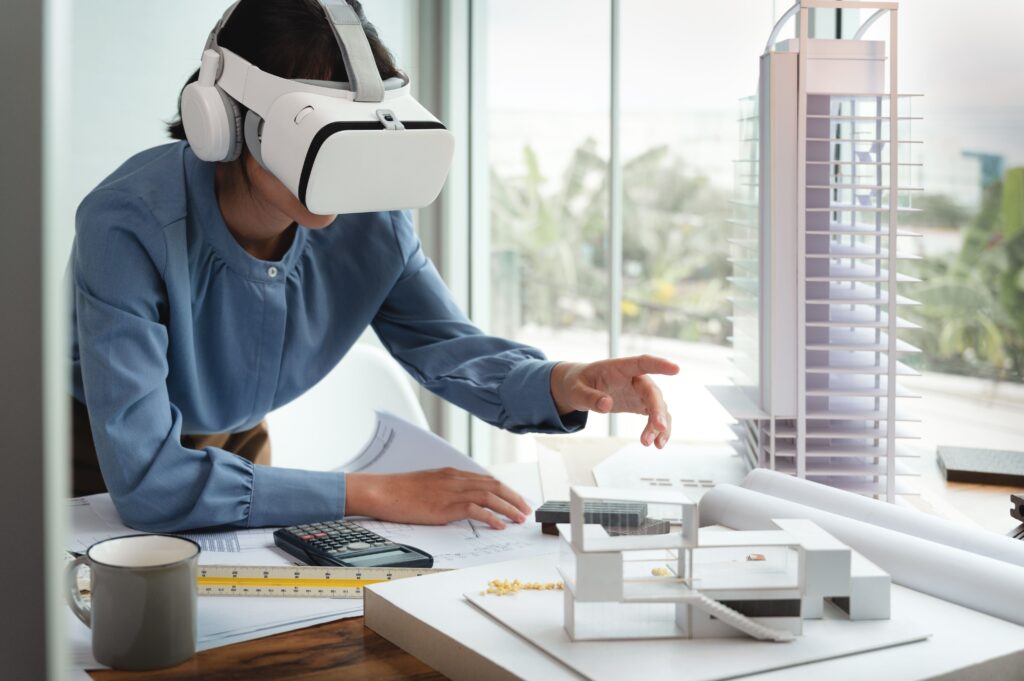VIRTUAL REALITY (VR) AND AUGMENTED REALITY (AR) IN CIVIL ENGINEERING: TRANSFORMING DESIGN, VISUALIZATION, AND PROJECT MANAGEMENT
Introduction: Virtual Reality (VR) and Augmented Reality (AR) technologies have made significant advancements in recent years, revolutionizing various industries, including civil engineering. These immersive technologies are transforming the way professionals in the field design, visualize, and manage construction projects. By bridging the gap between the digital and physical worlds, VR and AR offer unprecedented opportunities for enhanced collaboration, efficiency, and cost savings in the civil engineering sector.
- Design and Visualization Enhancements: Virtual Reality enables civil engineers to create and experience realistic, interactive, and immersive virtual environments. This technology allows engineers to design and visualize structures in three dimensions, providing an intuitive understanding of the project before construction begins. By using VR, engineers can identify potential design flaws, clash detection, and make informed decisions early in the design phase, reducing costly errors and rework during construction. Additionally, stakeholders can virtually “walk through” the project, gaining a better understanding of the final outcome and offering valuable feedback.
- Enhanced Project Communication and Collaboration: VR and AR technologies facilitate improved communication and collaboration among project teams. With virtual environments, stakeholders from different disciplines can virtually come together, regardless of geographical locations, to review and discuss designs, making real-time modifications and resolving issues. This level of collaboration streamlines decision-making processes, accelerates project timelines, and ensures that all parties are aligned with project goals and objectives.
- Safety Training and Simulation: Safety is a critical aspect of civil engineering projects. VR and AR are increasingly being used for safety training and simulations, allowing workers to undergo realistic and immersive training experiences without exposing them to actual on-site hazards. Through VR, workers can practice safety protocols, emergency scenarios, and equipment handling, improving their preparedness and reducing the risk of accidents. Furthermore, AR can overlay safety information directly onto the physical environment, providing real-time instructions, hazard warnings, and other important details.
- On-site Construction Assistance: Augmented Reality plays a significant role in on-site construction assistance. By superimposing digital information onto the real-world environment, AR can provide workers with real-time visualizations of construction plans, ensuring accurate placement of elements and reducing errors. AR can also assist in the quality control process by overlaying design models onto the physical structure, allowing inspectors to compare as-built conditions with the intended design, identifying any deviations or issues that need attention.
- Remote Monitoring and Project Management: VR and AR technologies enable remote monitoring and project management, particularly in large-scale construction projects. By using VR, project managers can virtually navigate the construction site, inspect progress, and identify potential bottlenecks or conflicts. Remote stakeholders can also participate in virtual site visits, providing feedback and making informed decisions without the need for physical presence. These capabilities result in improved project coordination, reduced travel costs, and enhanced overall project efficiency.
Conclusion: Virtual Reality (VR) and Augmented Reality (AR) technologies are transforming the civil engineering industry by revolutionizing design, visualization, and project management processes. These immersive technologies offer engineers and stakeholders the ability to create realistic virtual environments, enhance collaboration, improve safety training, assist in on-site construction, and enable remote monitoring and project management. As VR and AR continue to evolve, their integration into civil engineering practices is expected to become more widespread, bringing significant benefits in terms of efficiency, cost savings, and improved project outcomes.


